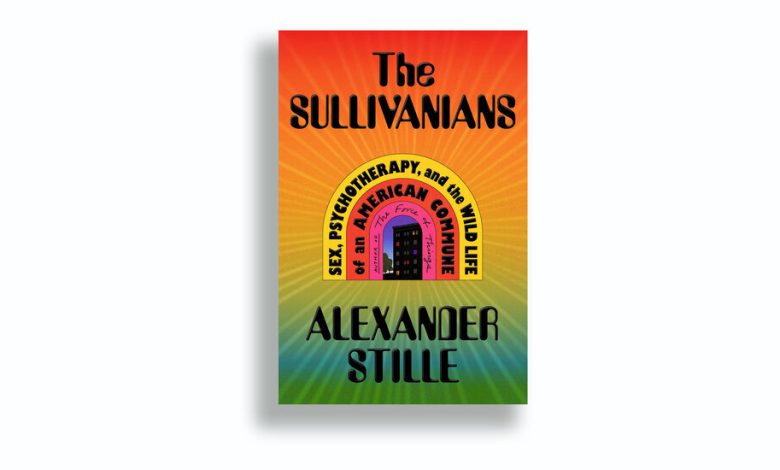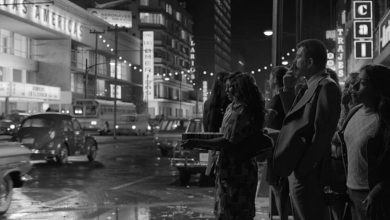A Cult ‘Hiding in Plain Sight’ Amid the New York Brownstones

THE SULLIVANIANS: Sex, Psychotherapy, and the Wild Life of an American Commune, by Alexander Stille
Legal marijuana notwithstanding, true New Yorkers have long prided themselves on resisting certain Californish things. Malls. Cars. Cults.
Maybe that’s why the astounding story that pours forth from Alexander Stille’s new book “The Sullivanians,” about hundreds of people who got sucked into a very peculiar live-work situation on the Upper West Side of Manhattan for decades, isn’t better known.
Denial: It’s not just a river in Egypt that’s much bigger than the Hudson. It’s also one of those slightly antiquated pop-psychology terms, like paranoia and transference, that used to get passed around cultured Manhattan living rooms along with glasses of Riunite and overchilled Brie on Triscuits. Everyone was in analysis: an intellectual pursuit. No one called it therapy, that soft millennial word.
Stille, a journalism professor at Columbia University whose most relevant previous book was about the Mafia, found this “alternate society in our own midst, hidden in plain sight,” and explores it through dozens of interviews, personal and legal papers, and several memoirs, published and unpublished. Like a hawk crouching on a grotesque at the fabled Apthorp building, which also makes a cameo in this tale, he gives us a keen bird’s-eye view.
That some (not all) Sullivanians referred to themselves as Sullivanians at all is a bit of historical misdirection. Harry Stack Sullivan was an eminent American psychiatrist who died in 1949. He had advocated a warmer clinical practice than that of the distant, frosty Freudians, placing special emphasis on the importance of peer interaction, which he called “chumship,” in human development.
One of his star pupils was Jane Pearce, who finished her medical training at the well-regarded William Alanson White Institute, which Sullivan helped to found. She met Saul Newton, a communist labor organizer with major red flags in the woman department, at a bridge game in Chicago. Eventually he came to work in the White Institute’s bursar’s office and they married (his fourth time). The couple swiped her teacher’s name to start their own institute in 1957.
What ensued, which Stille recounts with an almost claustrophobic intimacy, must have Sullivan rolling over on his couch for all eternity.
The bellicose Newton had no formal training and clearly had his own unresolved issues — he once beheaded a flock of diseased chicks at the behest of his tyrannical father. Yet from the beginning he exerted so much influence and authority over the new institute that Clement Greenberg, the art critic who was an early patient and referred Jackson Pollock and others, called his treatment method Newtonian.
Its fundamental premise was to break the bonds between parent and child: “splitting the atom of the nuclear family,” Stille writes, “and scattering its pieces.” Mothers were thought to be particularly malevolent. Free love was encouraged— if insisting that close, exclusive attachments are unhealthy can really count as “free.” Alcohol was considered an elixir, as salubrious as green juice.
This all began in a period of postwar conformity that creative people were naturally motivated to flout, and got more out-there as the ’60s and ’70s progressed. Besides many artists, those whom Stille locates, at various points, in the Sullivanian orbit include musicians (Judy Collins, members of the band Sha Na Na, Elliott Randall, a guitarist on the Steely Dan hit “Reelin’ in the Years”); authors and the author-adjacent (Richard Price, James Agee’s daughter Deedee); and the dancer and choreographer Lucinda Childs.
Later, members would be urged to learn computer programming, against many of their natural inclinations but more reliably lucrative for the organization, which billed for analysis and eventually invested in real estate and other projects.
Expanding into dormlike apartments segregated by gender, Newton and his cohort offered some who were suffering from urban loneliness a ready-made community and a satisfyingly full datebook. “Add water and it’s instant friends,” Price told Stille. “It’s instant sex life … like somebody opened the gates of heaven.”
In 1975 the group started a political theater repertory company, the Fourth Wall. “They combined the worst of Marxism, psychoanalysis and the musical theater,” said one of Saul’s daughters, Esther Newton, an anthropologist known for her germinal research on drag queens.
A major amusement of “The Sullivanians” is how it conjures the bad old days of New York City in all its lurid colors. One woman kills a cockroach crawling up the wall during a lovemaking session; another reclines on a bench in the middle of Broadway with a paper plate over her crotch and a Dixie cup on each breast.
There is theft (“Only in a lefty group would someone be accused of stealing a pottery kiln,” Stille notes) and wacky food restrictions, prompting two rebels to make a “cheeseburger oath” of secrecy as they sat in a forbidden restaurant and discussed their doubts. After the Three Mile Island nuclear meltdown, many in the group fled for a time to Disney World, where in a kind of “apocalyptic bacchanalia” they took sedatives and had group sex in a Howard Johnson’s.
The community always had its own special vocabulary. One exercise, sometimes postcoital, was delivering a harsh character assessment known as a “summary.” Getting too involved with someone, which was seen as dependency, was “romantic focus.” “The Conditions of Human Growth,” a book co-authored by Newton and Pearce in 1963, suggested especially intense romantic focus was a form of “hostile integration.” (“What most people would call ‘falling in love,’” as Stille observes.)
Ethics were questionable from the beginning: Pearce glugged vodka even in morning sessions, while Newton, along with serial cheating on Pearce and his subsequent wives (he had six in total), often demanded oral sex from female patients and domestic help. Members were inspired to regress to childhood and recoup missing stages of development. For a couple of summers in Amagansett, where the leaders built a summer residence, men and women walked around sucking on pacifiers, carrying stuffed animals and meting out martinis from baby bottles.
In the meantime, the actual children suffered to varying degrees, routinely outsourced to babysitters or sent away to boarding schools, some terrible. The development of DNA tests revealed hitherto unknown biological relationships, providing, Stille writes, “as many twists and turns as the end of a Dickens novel in which mistaken identities are clarified and long-lost foundlings are reunited with their parents.”(Though some members never got to reconcile with estranged birth families.)
What hastened the end? A 1986 article by Joe Conason in The Village Voice. Lawsuits brewing faster than Sanka. And defectors, including one mother refused time with her child, who’d become known as “the contras.”
“The Sullivanians” is a fascinating study of group dynamics and a highly competent historical account. Its only flaw, narratively speaking, is that this key party of self-actualizers features no particular cheerable hero or heroine — only survivors with varying degrees of rue, blinking as the light of hindsight intensifies.
THE SULLIVANIANS: Sex, Psychotherapy, and the Wild Life of an American Commune | By Alexander Stille | 418 pp. | Farrar, Straus & Giroux | $30




